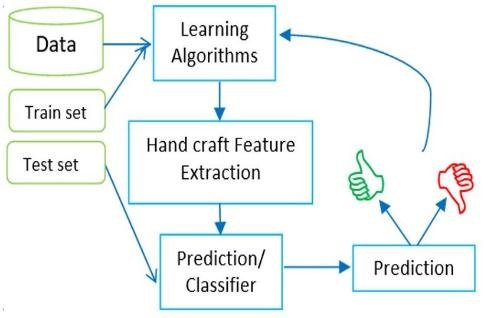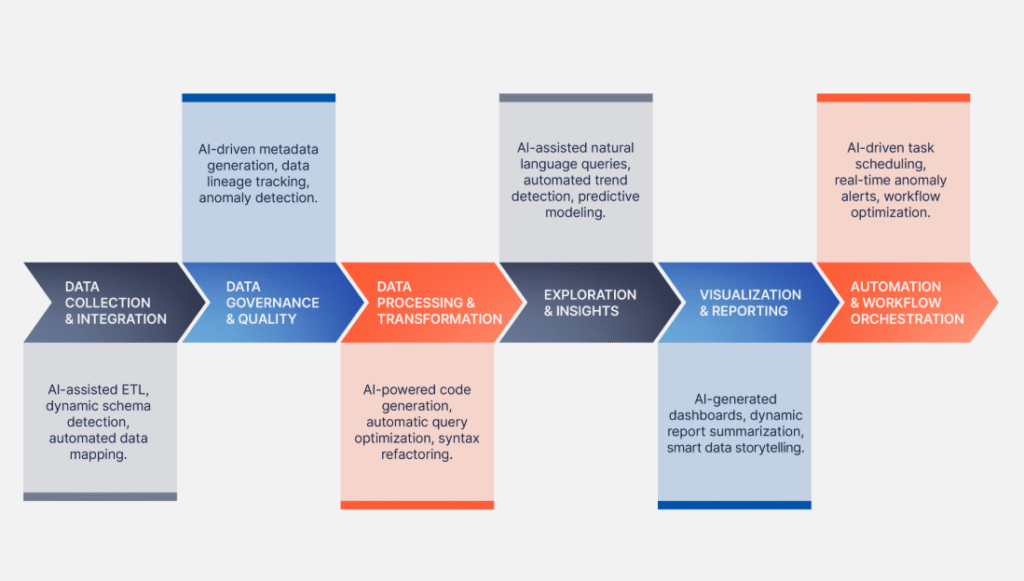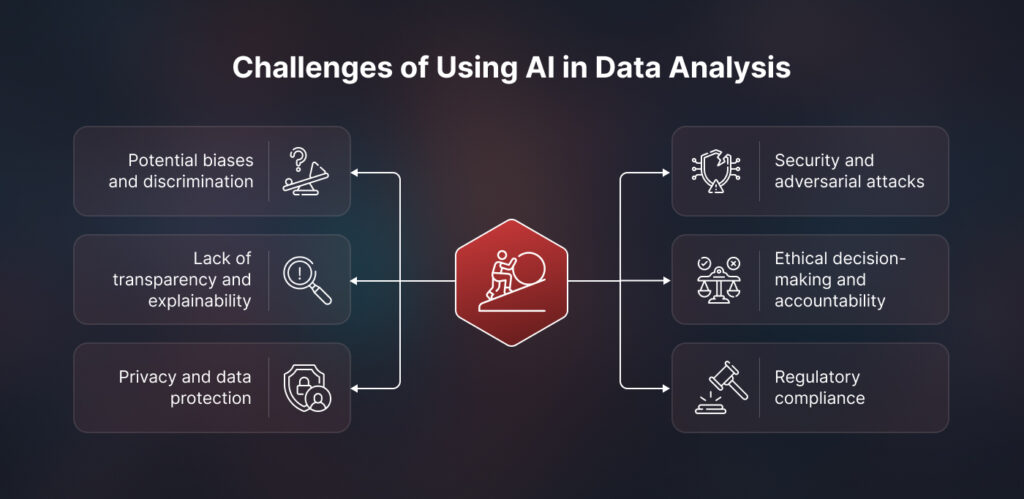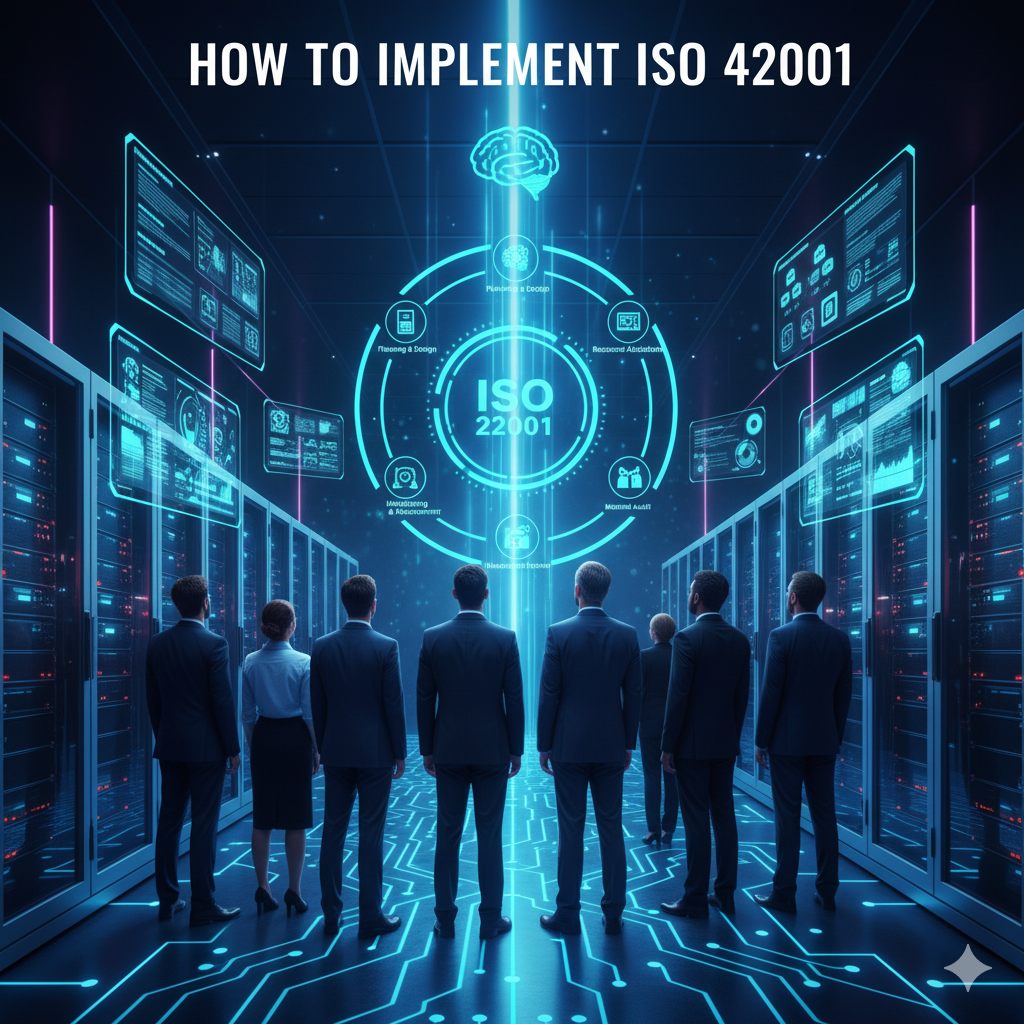AI analytics represents a transformative approach to data analysis that combines artificial intelligence with traditional analytical methods to deliver unprecedented insights and decision-making capabilities. As organizations generate massive volumes of data daily, AI analytics has emerged as the critical technology enabling businesses to transform raw information into actionable intelligence faster and more accurately than ever before.
What is AI Analytics
AI analytics applies artificial intelligence technologies to automate data analysis, identify complex patterns, generate insights, and make predictions from large datasets. Unlike traditional analytics that relies heavily on manual processes and predefined queries, artificial intelligence analytics uses machine learning algorithms and natural language processing to automatically discover hidden relationships and trends within both structured and unstructured data.
This technology changes how organizations approach data analysis by enabling systems to learn from data without explicit programming for each analytical task. AI data analysis can process diverse data types including text, images, audio, and sensor data, providing comprehensive insights that would be impossible to achieve through conventional analytical methods alone.
The fundamental difference lies in automation and intelligence. While traditional analytics requires human analysts to formulate hypotheses and design specific queries, AI analytics systems can autonomously explore data, identify anomalies, and surface unexpected insights that humans might overlook.
How AI Analytics Works
AI analytics operates through several interconnected technologies that work together to transform raw data into actionable insights. Understanding these core components helps organizations appreciate the sophistication and capabilities of modern automated data analysis systems.
Machine Learning Algorithms
Machine learning algorithms serve as the computational engine of AI analytics systems, enabling them to automatically identify patterns and relationships within data without explicit programming. These algorithms learn from historical data to make predictions and decisions about new information, continuously improving their accuracy as they process more data.

Key machine learning approaches include:
- Supervised learning: Uses labeled training data to learn specific tasks like classification or regression
- Unsupervised learning: Explores data without predefined outcomes to discover hidden patterns and groupings
- Reinforcement learning: Learns optimal actions through trial and error with feedback
The iterative aspect of machine learning represents a significant advantage over static analytical rules. As algorithms process new data, they adapt their internal parameters to maintain or improve accuracy, ensuring that machine learning analytics systems remain effective even as business conditions and data characteristics change over time.
Natural Language Processing
Natural language processing enables AI analytics systems to understand and interpret human language, allowing users to ask questions in plain English rather than learning complex query languages or technical interfaces. This capability democratizes data analysis by enabling business users to interact with analytical systems using natural communication methods.
NLP technologies can analyze unstructured text data from sources such as customer communications, social media posts, survey responses, and documentation to extract meaningful insights. These systems can perform sentiment analysis to understand customer attitudes, identify key themes in feedback, and automatically categorize text-based information for further analysis.
Advanced NLP capabilities enable conversational analytics interfaces where users can ask follow-up questions, refine their queries, and explore data through natural dialogue.
Data Mining and Pattern Recognition
Data mining techniques enable AI analytics systems to sift through vast datasets to identify trends, correlations, and anomalies that would be difficult or impossible for humans to detect manually. These systems can analyze millions of data points simultaneously, discovering subtle patterns that emerge only when examining data at scale.
Pattern recognition capabilities include:
- Trend identification: Spotting recurring themes and seasonal patterns across time periods
- Anomaly detection: Finding unusual data points that deviate from normal patterns
- Correlation analysis: Discovering relationships between seemingly unrelated variables
Automated pattern detection removes human bias and limitations from the discovery process, enabling systems to explore data relationships without preconceived notions about what patterns exist.
Automated Decision Making
AI analytics systems can not only generate insights but also recommend specific actions and, in some cases, automatically execute decisions based on data analysis. This capability extends analytics beyond reporting to active business optimization through intelligent automation.
Prescriptive analytics capabilities enable systems to simulate different scenarios and recommend optimal strategies based on predicted outcomes. These systems consider multiple variables and constraints to suggest actions that are most likely to achieve desired business objectives while minimizing risks and costs.
Benefits of AI Analytics for Business
Organizations implementing AI analytics experience significant improvements across multiple dimensions of business performance. These AI analytics benefits extend beyond simple efficiency gains to encompass strategic advantages that can transform competitive positioning and market effectiveness.
Faster Data Processing and Analysis
AI analytics systems can process and analyze data at speeds that far exceed human capabilities, enabling near real-time insights that support immediate decision making. Where traditional analysis might require days or weeks to complete, AI systems can deliver comprehensive insights within minutes or hours.
This speed advantage proves particularly valuable in dynamic business environments where conditions change rapidly and competitive windows are brief. Organizations can identify market opportunities, detect operational issues, and respond to customer needs with unprecedented responsiveness.
Speed advantages include:
- Real-time processing: Analyzing streaming data as it arrives
- Batch processing: Handling large historical datasets overnight
- Parallel processing: Running multiple analyses simultaneously
Improved Decision Making Accuracy
Business intelligence AI reduces human bias and error in decision making by providing objective, data-driven recommendations based on comprehensive analysis rather than intuition or limited information. These systems can consider far more variables and scenarios than human analysts, leading to more informed and accurate decisions.
The consistency of AI analytics ensures that similar situations receive similar analytical treatment, eliminating the variability that can occur when different people analyze comparable scenarios. This consistency improves decision quality and supports better organizational coordination and predictability.
Machine learning capabilities enable AI analytics systems to learn from past decisions and outcomes, continuously improving their recommendation accuracy over time.
Cost Reduction and Efficiency Gains
Automation of analytical processes significantly reduces the manual effort required for data processing, analysis, and reporting, freeing skilled analysts to focus on strategic interpretation and creative problem solving rather than routine data manipulation tasks.
AI analytics eliminates many of the costs associated with manual data processing errors, such as incorrect decisions based on faulty analysis, missed opportunities due to delayed insights, and operational inefficiencies resulting from incomplete information.
Efficiency improvements include:
- Reduced manual labor: Automating repetitive analytical tasks
- Error reduction: Minimizing human mistakes in data processing
- Resource optimization: Better allocation of staff time and budget
Enhanced Predictive Capabilities
Predictive analytics excels at forecasting future trends and outcomes based on historical data patterns, enabling organizations to anticipate changes and prepare proactive responses rather than merely reacting to events after they occur. These predictive capabilities support superior strategic planning and risk management.
Advanced algorithms can identify leading indicators and early warning signals that precede important business events, providing organizations with valuable preparation time to optimize their responses. This foresight enables better resource planning, inventory management, and strategic positioning.
Types of AI Analytics
AI analytics encompasses four primary categories that represent increasing levels of analytical sophistication and business value. Understanding these categories helps organizations identify which analytical approaches best meet their specific needs and objectives.

Descriptive Analytics
Descriptive analytics focuses on understanding what happened in the past by summarizing and interpreting historical data. AI enhances descriptive analytics by automatically processing vast amounts of structured and unstructured data to identify patterns, trends, and key insights that might be missed through manual analysis.
AI-powered descriptive analytics can analyze customer behavior data, sales performance metrics, operational statistics, and market trends simultaneously, providing comprehensive views of business performance across multiple dimensions.
Common descriptive analytics applications:
- Sales reporting: Analyzing revenue trends and performance metrics
- Customer analysis: Understanding purchase patterns and demographics
- Operational monitoring: Tracking key performance indicators across departments
Diagnostic Analytics
Diagnostic analytics extends beyond describing what happened to explain why specific events or patterns occurred. AI systems excel at diagnostic analysis by examining complex relationships between multiple variables and identifying root causes that might not be apparent through traditional analytical approaches.
Machine learning algorithms can analyze vast amounts of data to identify correlations and causal relationships, helping organizations understand the underlying factors driving observed outcomes. These systems can pinpoint specific variables or combinations of factors that contribute most significantly to particular results.
The sophistication of AI diagnostic analytics enables organizations to move beyond surface-level explanations to understand complex cause-and-effect relationships.
Predictive Analytics
Predictive analytics uses historical data patterns to forecast future trends, behaviors, and outcomes with greater accuracy than traditional forecasting methods. AI algorithms can analyze complex data relationships and identify subtle patterns that enable more precise predictions across various business scenarios.
These systems can forecast customer behavior, market trends, equipment failures, inventory needs, and financial performance with confidence intervals that help organizations understand the reliability of predictions.
Predictive analytics examples include:
- Customer churn prediction: Identifying customers likely to cancel subscriptions
- Demand forecasting: Predicting future product sales volumes
- Maintenance scheduling: Anticipating when equipment will need repairs
AI predictive analytics continuously learns from new data and actual outcomes, refining prediction accuracy over time.
Prescriptive Analytics
Prescriptive analytics represents the most advanced category, going beyond prediction to recommend specific actions for achieving desired outcomes. AI systems can simulate different scenarios, evaluate potential strategies, and recommend optimal approaches based on predicted results and organizational constraints.
These systems consider multiple objectives, resource limitations, and potential risks when generating recommendations, providing balanced strategies that optimize overall business outcomes rather than focusing on single metrics.
Real-world applications include supply chain optimization, pricing strategies, resource allocation, and marketing campaign design. AI prescriptive analytics can continuously adjust recommendations based on changing conditions, ensuring that strategies remain optimal as business environments evolve.
AI Analytics vs Traditional Analytics
The fundamental differences between AI analytics and traditional analytical approaches reflect advances in computational capabilities, automation sophistication, and analytical scope. Understanding these differences helps organizations appreciate the transformational potential of AI analytics implementation.
| Aspect | Traditional Analytics | AI Analytics |
|---|---|---|
| Data Processing Speed | Manual, time-intensive processes | Automated, near real-time analysis |
| Data Volume Capacity | Limited by human processing capabilities | Can handle massive, complex datasets |
| Pattern Recognition | Relies on predefined queries and human insight | Automatically discovers hidden patterns |
| Adaptability | Static rules require manual updates | Continuously learns and adapts |
| Data Types | Primarily structured, numerical data | Handles structured, unstructured, and multimedia data |
| Human Involvement | Heavy manual intervention required | Minimal human intervention needed |
Traditional analytics relies heavily on human expertise to formulate questions, design analytical approaches, and interpret results. This human-dependent process, while valuable for providing context and business judgment, creates bottlenecks that limit analytical speed and scope.
AI analytics automates many of these traditionally manual processes, enabling organizations to analyze far more data sources and explore more complex relationships than would be practical with traditional methods.
The learning capabilities of AI analytics represent perhaps the most significant advantage over traditional approaches. While traditional analytical rules remain static until manually updated, AI systems continuously adapt and improve based on new data and outcomes.

AI Analytics Use Cases and Applications
AI analytics delivers value across diverse industries and business functions, with implementations ranging from operational optimization to strategic decision support. These real-world AI analytics examples demonstrate the versatility and impact of artificial intelligence analytics across different sectors.

Healthcare and Medical Analytics
Healthcare organizations use AI analytics to enhance patient care quality, optimize resource utilization, and accelerate medical research. Medical imaging analysis uses computer vision algorithms to detect abnormalities in X-rays, MRIs, and CT scans with accuracy levels that often exceed human specialists.
Healthcare AI applications include:
- Diagnostic imaging: Detecting cancer, fractures, and other conditions in medical scans
- Drug discovery: Identifying promising compounds for new medications
- Patient monitoring: Tracking vital signs and predicting health complications
Predictive analytics helps healthcare providers identify patients at risk for complications, readmissions, or chronic disease progression, enabling proactive interventions that improve outcomes while reducing costs.
Financial Services and Risk Management
Financial institutions leverage AI analytics for fraud detection, risk assessment, and customer service enhancement. Real-time transaction monitoring systems analyze spending patterns, location data, and behavioral indicators to identify suspicious activities within seconds of occurrence.
Credit scoring and lending decisions benefit from AI analytics that can consider far more variables and data sources than traditional models, leading to more accurate risk assessment and better lending outcomes.
Financial AI analytics tools include:
- Fraud detection systems: Monitoring transactions for suspicious patterns
- Algorithmic trading platforms: Making rapid investment decisions based on market data
- Credit risk models: Assessing borrower creditworthiness using alternative data sources
Retail and E-commerce Optimization
Retail organizations use AI analytics for customer behavior analysis, personalized marketing, and inventory optimization. Recommendation engines analyze purchase history, browsing patterns, and similar customer preferences to suggest products that customers are likely to purchase.
Price optimization systems continuously adjust product pricing based on demand patterns, competitor analysis, inventory levels, and market conditions to maximize revenue and profit margins.
Supply chain management benefits from AI analytics through demand forecasting, supplier risk assessment, and logistics optimization. These applications help retailers maintain optimal inventory levels while minimizing carrying costs and stockout risks.
Manufacturing and Supply Chain
Manufacturing organizations implement AI analytics for predictive maintenance, quality control, and production optimization. Sensor data analysis enables prediction of equipment failures weeks or months before they occur, reducing unplanned downtime and maintenance costs.
Manufacturing AI applications:
- Predictive maintenance: Using sensor data to predict equipment failures
- Quality control: Detecting product defects during manufacturing
- Production planning: Optimizing manufacturing schedules and resource allocation
Quality control systems use computer vision and sensor analysis to detect defects and anomalies in products during manufacturing processes, reducing waste and ensuring consistent product quality.
How to Implement AI Analytics
AI analytics implementation requires systematic planning and execution across multiple organizational dimensions. Organizations can address technical, human, and strategic considerations to realize the full potential of AI-powered insights capabilities. For comprehensive guidance on strategic implementation, consider engaging with AI strategy consulting to develop a customized roadmap.

1. Assess Your Data Infrastructure
Organizations can evaluate their current data architecture, quality, and accessibility before implementing AI analytics systems. This assessment examines data sources, storage systems, integration capabilities, and governance frameworks to identify gaps that need addressing.
Data infrastructure assessment includes:
- Data quality evaluation: Checking accuracy, completeness, and consistency
- Storage capacity review: Ensuring systems can handle increased data volumes
- Integration capabilities: Verifying systems can connect diverse data sources
Data quality assessment involves evaluating accuracy, completeness, consistency, and timeliness of existing data sources. AI analytics systems require high-quality data to deliver reliable insights, making data quality improvement often a prerequisite for implementation.
Infrastructure scalability evaluation determines whether existing systems can support the computational and storage requirements of AI analytics.
2. Define Business Objectives and Use Cases
Clear definition of business objectives and specific use cases guides AI analytics implementation toward value creation rather than technology deployment for its own sake. Organizations can identify specific business problems that AI analytics can address and establish success metrics for measuring implementation effectiveness.
Use case prioritization helps organizations focus initial efforts on applications with the highest potential impact and probability of success. Starting with well-defined, manageable use cases enables organizations to build experience and demonstrate value before tackling more complex implementations.
Common starting use cases:
- Customer segmentation: Grouping customers by behavior patterns
- Sales forecasting: Predicting future revenue trends
- Operational monitoring: Tracking key performance indicators automatically
3. Select AI Analytics Tools and Platforms
Platform evaluation considers technical capabilities, scalability, integration requirements, and total cost of ownership. Organizations balance functionality needs with implementation complexity and resource requirements.
Cloud versus on-premise deployment decisions depend on data security requirements, compliance constraints, performance needs, and cost considerations. Cloud platforms often provide faster implementation and better scalability, while on-premise solutions may offer better control and security for sensitive data.
Vendor evaluation assesses not only current capabilities but also product roadmaps, support quality, and long-term viability.
4. Develop Governance and Security Frameworks
Data governance frameworks ensure that AI analytics implementations comply with regulatory requirements, maintain data privacy, and follow ethical AI principles. These frameworks address data access controls, audit trails, and decision transparency requirements. Organizations seeking guidance on responsible AI implementation can benefit from AI ethics consulting and compliance consulting services.
Governance framework components:
- Data access policies: Controlling who can view and modify data
- Audit procedures: Tracking how AI systems make decisions
- Privacy protections: Ensuring personal information remains secure
Security considerations for AI analytics include protecting training data, securing model algorithms, and ensuring that AI systems cannot be manipulated or compromised.
Ethical AI practices ensure that AI analytics systems operate fairly, transparently, and without bias. Organizations can establish policies and procedures for monitoring AI system behavior, addressing bias concerns, and maintaining human oversight of AI-driven decisions.
5. Deploy and Monitor Performance
Phased deployment approaches enable organizations to test AI analytics systems in controlled environments before full-scale implementation. Pilot projects provide opportunities to refine processes, train users, and validate system performance before broader rollout.
Performance monitoring systems track both technical metrics such as accuracy and response time, as well as business metrics such as user adoption and impact on key performance indicators.
Change management processes help users adapt to AI-enhanced workflows and decision-making processes. Training programs, communication strategies, and support resources ensure that organizations can effectively utilize their AI analytics investments. For ongoing support throughout implementation, AI integration and support services can provide technical assistance and optimization guidance.
AI Analytics Challenges and Solutions
Organizations implementing AI analytics face several common challenges that can impede success if not properly addressed. Understanding these challenges and their solutions helps organizations prepare for implementation and operation.

Data Quality and Integration Issues
Poor data quality represents one of the most significant barriers to AI analytics success, as these systems require clean, consistent, and comprehensive data to deliver reliable insights. Organizations often struggle with data silos, inconsistent formats, and incomplete information that compromises analytical accuracy.
Common data quality problems:
- Incomplete records: Missing important fields or values
- Inconsistent formatting: Different systems storing data in different ways
- Duplicate entries: Same information recorded multiple times
Solutions include implementing comprehensive data governance programs that establish data quality standards, automated data cleansing processes, and regular quality monitoring.
Master data management approaches help organizations establish single sources of truth for critical business entities such as customers, products, and suppliers, reducing inconsistencies that can undermine AI analytics effectiveness.
Skills Gap and Training Requirements
The specialized knowledge required for AI analytics implementation and operation often exceeds the capabilities of existing IT and business teams. Organizations face challenges finding and retaining talent with expertise in data science, machine learning, and AI system management.
Training existing staff provides a cost-effective approach to building internal capabilities while maintaining organizational knowledge and culture. Comprehensive training programs address both technical skills and business application understanding to ensure effective AI analytics utilization.
Key skill areas include:
- Data science fundamentals: Statistics, programming, and analytical thinking
- Business domain knowledge: Understanding industry-specific applications
- AI literacy: Knowing how to interpret and use AI-generated insights
Strategic hiring and partnerships with AI analytics consulting firms can supplement internal capabilities while building long-term organizational competence.
Security and Privacy Concerns
AI analytics systems often process sensitive business and personal data, creating security and privacy risks that require careful management. Data breaches, unauthorized access, and compliance violations can create significant business risks and legal liabilities.
Comprehensive security frameworks address data encryption, access controls, audit logging, and threat monitoring specific to AI analytics environments. Organizations implement security measures that protect both data and AI models from unauthorized access and manipulation.
Privacy protection requires implementing techniques such as data anonymization, differential privacy, and federated learning that enable AI analytics while protecting individual privacy rights.
Change Management and Adoption
Organizational resistance to AI analytics adoption can undermine implementation success even when technical systems function properly. Users may resist changing established workflows or may not understand how to effectively utilize AI analytics capabilities.
Change management strategies include:
- Clear communication: Explaining AI analytics benefits and addressing concerns
- Comprehensive training: Building user competence and confidence
- Support systems: Helping users adapt to AI-enhanced processes
Cultural transformation toward data-driven decision making requires sustained effort and reinforcement. Organizations can recognize and reward effective AI analytics utilization while addressing concerns and resistance through education and support.
Getting Started with AI Analytics Strategy
Organizations ready to begin their AI analytics journey can approach implementation strategically, focusing on building foundations for long-term success rather than pursuing quick wins that may not scale effectively. A strategic approach balances ambition with realism, ensuring that initial efforts build capabilities and demonstrate value while establishing platforms for expansion.
The first step involves conducting a comprehensive organizational readiness assessment that evaluates data maturity, technical infrastructure, human capabilities, and cultural factors that influence AI analytics success.
Strategic planning establishes a multi-year roadmap that sequences AI analytics initiatives based on business impact potential, technical complexity, and organizational readiness. Early projects focus on building internal capabilities and demonstrating value while preparing the organization for more advanced applications.
Success requires commitment to building internal capabilities alongside technology implementation. Organizations can invest in training, change management, and governance frameworks that enable sustainable AI analytics success rather than depending entirely on external resources for implementation and operation.
Frequently Asked Questions About AI Analytics
What specific technical skills do teams need to implement AI analytics successfully?
AI analytics teams need a combination of technical data science skills (statistics, programming in Python or R, machine learning algorithms), business domain expertise to understand how AI applies to specific industries, and AI literacy to interpret model outputs and communicate insights effectively to stakeholders.
How do organizations calculate return on investment for AI analytics projects?
Organizations measure AI analytics ROI by establishing baseline performance metrics before implementation, then tracking improvements in key business indicators such as cost savings, revenue increases, time reductions, and accuracy improvements. Financial benefits are compared against total implementation and operational costs over a defined time period.
What specific data infrastructure upgrades are required before implementing AI analytics?
Most organizations need to upgrade their data storage capacity, implement data integration platforms to connect disparate sources, establish data quality monitoring systems, and often migrate to cloud-based infrastructure to handle the computational requirements of machine learning algorithms.
How long does it take to see measurable business results from AI analytics implementation?
Simple AI analytics projects with clean, well-prepared data can show initial results within 3-6 months, while complex enterprise-wide implementations typically require 12-18 months to demonstrate significant business impact. Results depend heavily on data readiness and organizational preparation.
What specific security protocols protect sensitive data in AI analytics systems?
AI analytics security includes data encryption both in transit and at rest, role-based access controls limiting who can view specific datasets, audit logging to track all data access and model decisions, and techniques like differential privacy that allow analysis while protecting individual privacy rights.

